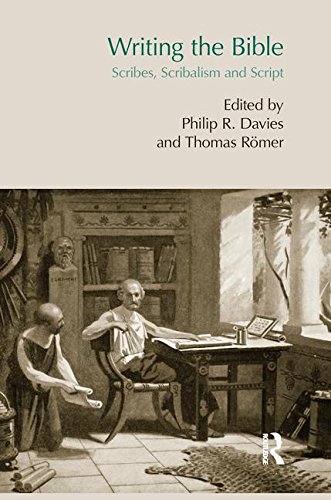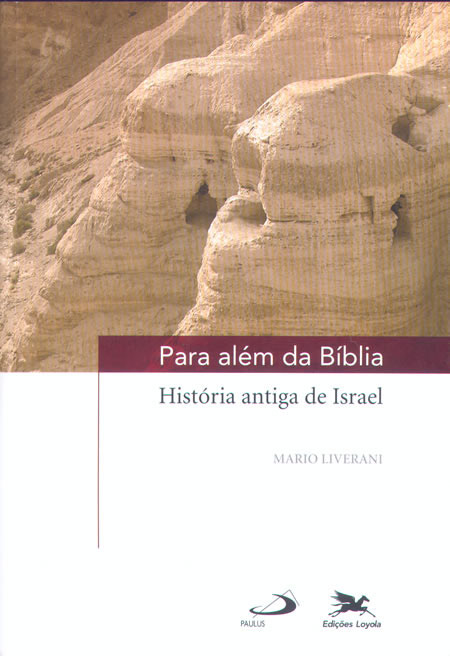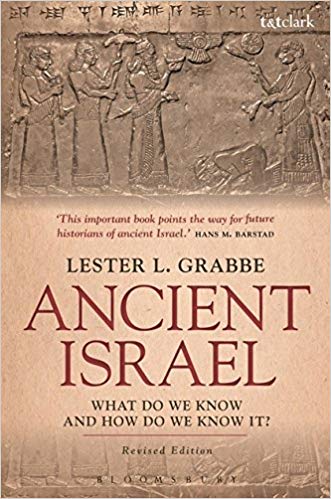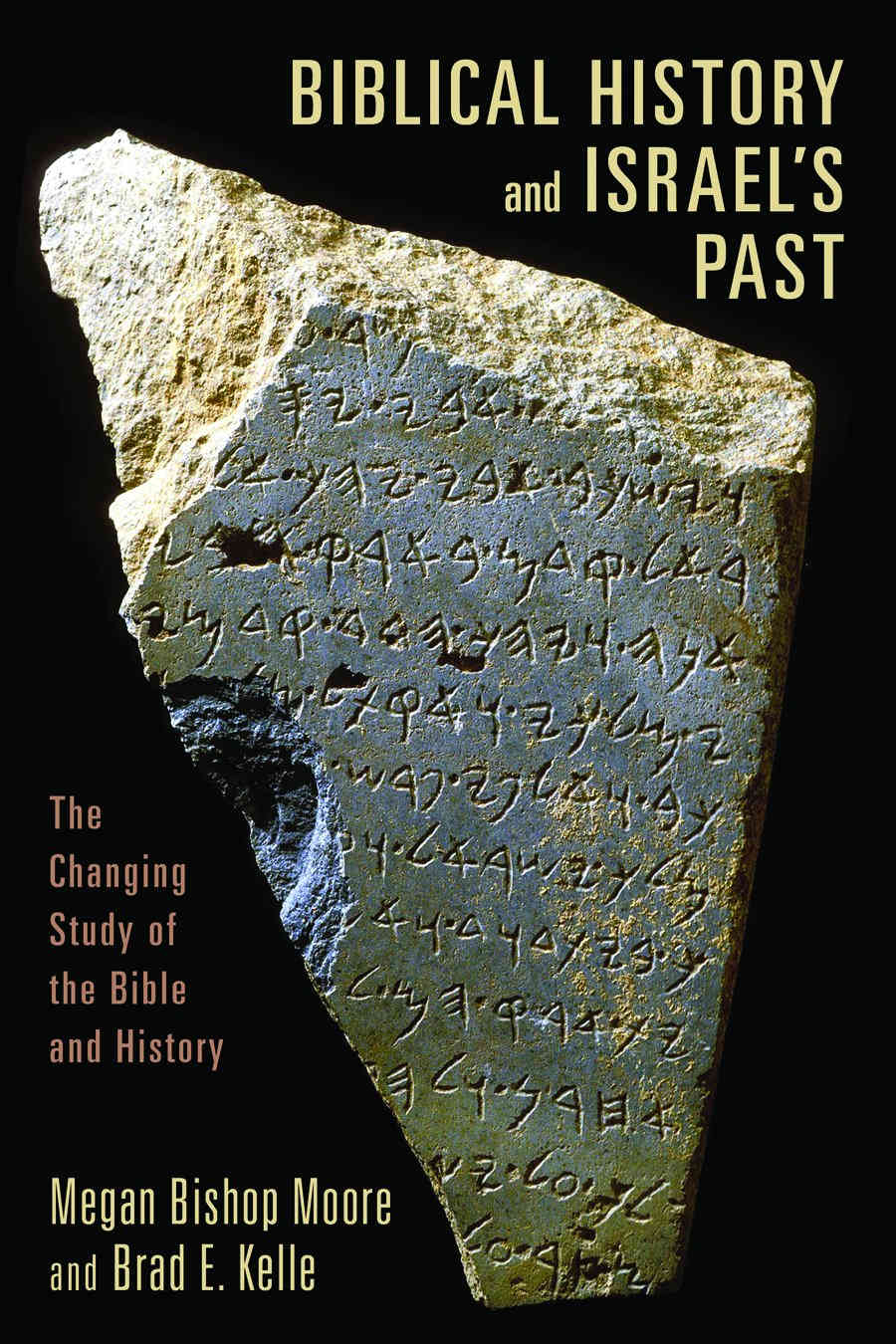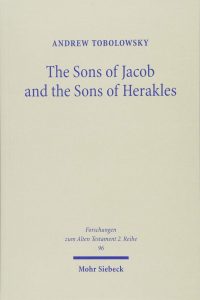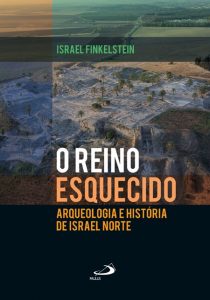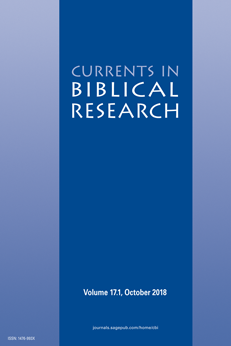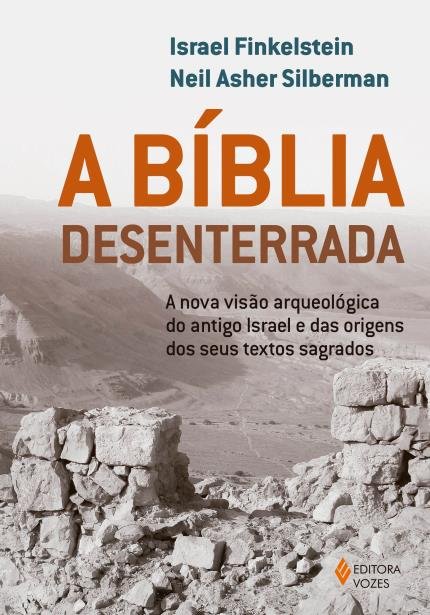:. A História de Israel e Judá na pesquisa atual I
:. A História de Israel e Judá na pesquisa atual II
:. A História de Israel e Judá na pesquisa atual III
:. A História de Israel e Judá na pesquisa atual IV
:. A História de Israel e Judá na pesquisa atual V
TOBOLOWSKY, A. Israelite and Judahite History in Contemporary Theoretical Approaches. Currents in Biblical Research, Vol. 17(1), 2018, p. 33-58.
Este artigo de Andrew Tobolowsky, História israelita e judaíta em abordagens acadêmicas contemporâneas, analisa a evolução do estudo das histórias de Israel e Judá, com ênfase nos últimos dez anos. Durante esse período, tem havido um interesse crescente em evidências extrabíblicas como o principal meio de construir histórias abrangentes, e um renascimento do interesse em teorias pós-modernas. Este estudo oferece uma discussão geral sobre as tendências da última década, considerando a possibilidade dos autores judaítas só terem assumido uma identidade israelita após a queda de Israel [= reino do norte]. Depois de mostrar as principais tendências nos estudos da Bíblia e da História de Israel de modo genérico, o autor aborda o período pré-monárquico, a monarquia unida, os dois reinos de Israel e Judá e o exílio babilônico e, por fim, a época persa.
This article surveys developments in the study of the histories of ancient Israel and Judah with a focus on the last ten years. Over that period there has been an increased focus on extrabiblical evidence, over biblical text, as the primary means of constructing comprehensive histories, and a revival of interest in post-modern and linguistic-turn theories with respect to establishing what kinds of histories should be written. This study offers a general discussion of the last decade’s trends; an inquiry into the possibility that Judahite authors only assumed an Israelite identity after the fall of Israel; and an era-by-era investigation of particular developments in how scholars think about the various traditional periods of Israelite and Judahite history. The latter inquiry spans the pre-monarchical period to the Persian period.
Andrew Tobolowsky: Visiting Assistant Professor at the College of William and Mary in Williamsburg, Virginia, USA.
Sempre que o assunto tiver sido tratado em minha página, Ayrton’s Biblical Page, ou neste blog, Observatório Bíblico, colocarei um link. As principais obras citadas terão links para a Amazon.com.br. O texto em português é um resumo e uma tradução livre minha. O texto em inglês na parte final do post é citação do artigo. A publicação será feita em 5 postagens.
5. A época persa – The Persian Period and Beyond
A época persa tem sido extensamente reavaliada nos estudos da última década. Se há uma mudança de paradigma nos estudos, é aqui que ela acontece. Propostas estão sendo abandonadas, como a de uma “revolução religiosa” no Yehud ou, pelo menos parcialmente, a teoria da Autorização Imperial Persa. Estas propostas podem ser conferidas em E. Stern, 1999, 2006, 2010; Christian Frevel et alii, 2014; James W. Watts, 2001.
Constata-se que na época persa surgiu um significativo interesse pelo passado, presente na visão bíblica da história que então se desenvolveu. Assim, têm sido publicados muitos estudos recentes sobre o período persa, considerado como época crucial para a formação textual de todos os tipos, incluindo o Tetrateuco, Pentateuco, Hexateuco e Eneateuco, bem como de outros materiais que tentam pensar a identidade judaica.
Por exemplo: Erhard Blum, em T.B. Dozeman ; K. Schmid (eds.), A Farewell to the Yahwist? The Composition of the Pentateuch in Recent European Interpretation (2006) e em T. B. Dozeman ; T. Römer ; K. Schmid (eds.), Pentateuch, Hexateuch or Enneateuch? Identifying Literary Works in Genesis through Kings (2011); J. C. Gertz, em T. B. Dozeman ; K. Schmid (eds.), A Farewell to the Yahwist? The Composition of the Pentateuch in Recent European Interpretation (2006); Thomas Römer, em Joel S. Baden (ed.), The Strata of the Priestly Writings: Contemporary Debate and Future Directions (2009); Konrad Schmid, 2007, 2012a e 2012b; Thomas Römer & M.Z. Brettler, 2000; E. Ben Zvi, 2011; David S. Vanderhooft, 2011; J. Berquist, 2006.
A Obra do Cronista também tem sido reavaliada. O Cronista sempre foi relegado a segundo plano, quando comparado com a Obra Histórica Deuteronomista quanto à sua peculiar reconstrução histórica. Mas hoje, como sugere E. Ben Zvi, em 2009, podemos avaliar o seu poderoso senso de centralidade “etnocultural”, que parece ter sido uma característica da época persa. O Cronista queria apresentar aos seus leitores uma visão diferente da perspectiva Deuteronomista. Por isso suas divergências.
Outros chamam a atenção para os erros e contradições do livro de Esdras, ao mesmo tempo em que defendem a historicidade das memórias de Neemias (Ne 1,1-7,5; 12-13). Assim, Lester L. Grabbe, 1998; David M. Carr, 2011; J. Blenkinsopp, em James W. Watts (ed.), Persia and Torah: The Theory of Imperial Authorization of the Pentateuch (2001).
Tudo isso nos mostra que, para compreendermos a reconstrução pós-exílica, devemos olhar menos o período imediato após a ascensão de Ciro, no século VI a.C., e muito mais o final da época persa, ou seja, o final do século V e o começo do seculo IV a.C. Nesta época é que teria ocorrido a “recuperação” do passado de Israel pelos autores bíblicos.
Observa-se, então, que os principais estudos da época persa não buscam a descoberta de novos dados, embora isto também tenha ocorrido, mas a interpretação de dados já conhecidos com métodos mais adequados. Como observa Ian D. Wilson, em 2016, a questão não é se alguns corpora bíblicos contêm material que remonta à Idade do Ferro, o que já foi demonstrado, mas como este material está representado nas formas discursivas pós-monárquicas. O que parece ser urgente é a construção de um modelo mais eficaz que consiga relacionar a história das tradições bíblicas com a construção de sua narrativa em um tempo determinado por um limitado grupo de atores.
Neste sentido trabalha K. L. Noll, em 2008, quando questiona o alcance das tradições bíblicas: em que proporção as tradições bíblicas chegaram às pessoas que viveram naquela época e naquela região? Parece cada vez mais claro, por exemplo, que muitas tradições nunca chegaram em Elefantina. Philip R. Davies e Thomas Römer, em 2014, também discutiram isso. Os ensaios desta obra tratam da divulgação de textos, da formação de livros e cânones e dos efeitos sociais e políticos da escrita e do conhecimento textual. As questões centrais discutidas incluem o status do escriba, a natureza da “autoria”, a relação entre copiar e redigir e o status relativo do conhecimento oral e escrito.
Quanto tempo demorou para a Bíblia se tornar, não apenas canônica, mas “sagrada”? Quer dizer: tratada com o respeito devido às Escrituras como autoridade última e como algo que não poderia mais ser alterado. Datas limites para a canonização têm sido apresentadas de maneira consistente, mas a questão da “sacralidade” está apenas começando a ser tratada. Michael L. Satlow, em 2014, aborda isso.
Os estudos de Eva Mroczek, de 2015 e 2016, sobre a cultura literária extrabíblica, em épocas em que tipicamente se presumia uma “hegemonia do bíblico”, são importantes. Thomas Römer também estudou, em 2012, a relação entre as narrativas bíblicas e o mundo mais vasto dos textos judaicos posteriores.
No último parágrafo do artigo, Andrew Tobolowsky nos diz que estes estudos não apenas descrevem o que está sendo pesquisado sobre a época persa e sua literatura, mas nos indicam o rumo que as pesquisas estão tomando. Devemos continuar enfrentando estas questões, tentando descobrir o que significa uma visão bíblica de história criada em um contexto específico por um conjunto específico de razões. E são diferentes interpretações de uma mesma história. Mais: histórias que levaram algum tempo para se tornar um relato significativo das vivências de Israel. Conhecer isso determinará o modo como contaremos a história, ou melhor, as histórias de Israel. Isto está apenas começando.
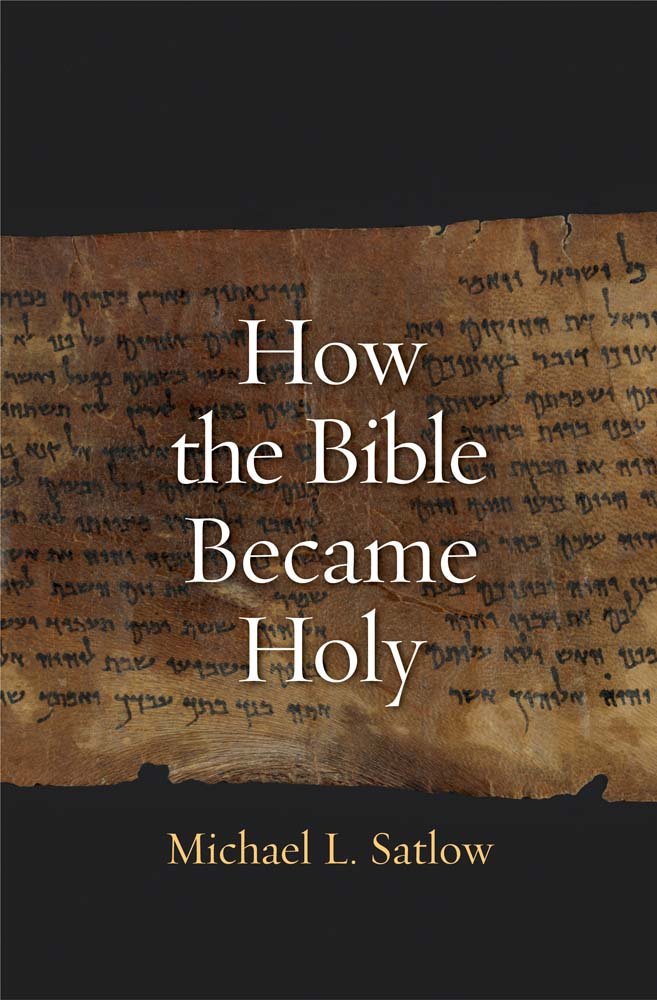
No period in the traditional sequence of biblical history has undergone a greater paradigm shift in the last decade than the Persian period. While various more dramatic proposals about it seem to have been largely set aside (e.g., Stern’s theory of a ‘Religious Revolution’ in Yehud and to a certain degree the so-called Persian Imperial Authorization theory [Stern 1999; 2006; 2010; Frevel, Psychny, and Cornelius 2014; Watts 2001]), many of the relevant developments have to do with reassessments of what has actually long been visible.
It now seems likely that the late Persian period did feature the kind of revival of interest in the ancient Israelite past that might explain its importance as the locus in which the biblical vision of history finally emerged (Lipschits and Vanderhooft 2006, 2014; Vanderhooft 2011: 540; Frevel and Pyschny 2014; Leith 2014; Bocher and Lipschits 2013; Wyssmann 2014). There have therefore been a number of studies recently on the Persian period as the crucial site for textual formation of all sorts, including of the Tetrateuch, Pentateuch, Hexateuch, and Enneateuch, as well of other materials focused on the formation of familiar biblical ways of thinking about ethnic identity at that time (Blum 2006; 2011; Gertz 2006; Römer 2009; Schmid 2007, 2012a, 2012b; Römer and Brettler 2000; Ben Zvi 2011a, 2011b; Knoppers 2001, 2003; Vanderhooft 2011; Berquist 2006).
Indeed, as Ben Zvi (2009: 60) suggests, the composition of Chronicles, Ezra, and Nehemiah may even have been motivated by an explicit desire ‘to shape, communicate, and encourage its readers to… vicariously relive through their reading a somewhat different past than the one shaped…through the reading of the deuteronomistic history, and for that matter, the Primary History’ (2009: 60). As a composition, it is ‘strongly shaped by the powerful sense of “ethnocultural” centrality that characterized the postmonarchic and most likely Persian-period works that eventually became included in the HB’ (2009: 77).
Others, in reconstructing the overall shape of Persian-period interactions with the biblical past, have drawn attention to the ramifications of the historiographical errors (and contradictions) in the account of the immediate aftermath of the Persian conquest in the book of Ezra. By contrast, there is also a growing consensus with respect to the plausibly historical character of the so-called ‘Nehemiah Memoir’, usually located in Neh. 1.1–7.5 and 12–13 (Grabbe 1998: 122-23, 152; Carr 2011: 205-208; Blenkinsopp 2001: 57). The combination of these factors, demonstrating that the late sixth and much of the fifth century bce were remembered rather poorly by biblical authors and that Jerusalem was apparently still essentially a ruin by the middle of the fifth century, suggests that scholars should look to the late fifth and early fourth centuries bce —and not the immediate aftermath of Cyrus’s conquest—for the major locus of the Yehudite ‘recovery’ of an Israelite past.
So, again, the major trends operating in the study of the Persian period today do not have as much to do with the uncovering of new data, although this has also occurred, as they do with the replacement of flawed models of tradition inheritance and representation with approaches more in tune with contemporary theorizing. As Wilson notes, the overall issue is not whether any biblical corpora contain material that dates to the Iron Age, as it seems clear that many do. Instead, it is that nevertheless their repetition in biblical form is primarily ‘representative of distinctly postmonarchic discursive formations’ (2016:6).
What now seems most necessary in confronting the biblical account of the past—as intimated in this article’s introductory discussion of theoretical trends—is the development of a new and more active model of the relationship between the history of biblical traditions and their construction into a comprehensive narrative account within a fairly limited time horizon by a fairly limited number of actors.
In this vein, Noll’s (2008) recent discussion of the flaws in typical approaches to doctrinal dissemination is very valuable. As he points out, despite nearly constant assumptions to the contrary, it is actually quite difficult to explain how biblical traditions would ever have reached most of the people who had lived in the region historically, and it now seems increasingly clear that many such traditions had not reached, for example, the Persian garrison at Elephantine. A similar discussion has also been produced by Davies, in a collection dealing generally with crucial issues in the writing of biblical literature (Davies 2014; Davies and Römer 2014). Obviously, what we can say about scribal culture, and when, must determine in large part how we reconstruct the reception of biblical and pre‐biblical texts throughout Israelite and Judahite history.
Michael Satlow (2014) has recently drawn attention to how very long it was before the Hebrew Bible was, in his term, ‘holy’, by which he means not just canonized but treated with the respect appropriate to scripture as an ultimate authority and as something that could no longer be altered. The late frontier of the former has been acknowledged consistently for some time, but the importance of the late date of the latter is just now beginning to be appreciated.
Towards that end, Eva Mroczek’s (2015; 2016) recent studies of extra-biblical literary culture, demonstrating its considerable creativity with respect to biblical subjects well into periods in which, in her term, the ‘hegemony of the biblical’ had been presumed, is of special importance.
Thomas Römer (2012) has also studied the possibility that biblical narratives were influenced by the wider world of Jewish textuality in later periods. In other words, neither the worlds of biblical textuality nor extrabiblical textuality were closed to each other or clearly dominated by the other until much later than has typically been supposed.
Not only do these studies represent crucial developments with respect to thinking about the Persian period and its literature, they are also intimations of where this field of study is generally likely to go. We will and must keep grappling with what it means that the biblical vision of history was ultimately created in a specific context, for a specific set of reasons; that it would not have matched everyone’s vision of the same history at that time or previously; and that, once completed, it did not immediately (or quickly) become the pre‐eminent account of Israelite history. What this will do to how we tell the history—rather histories—of Israel is just now coming into view.
